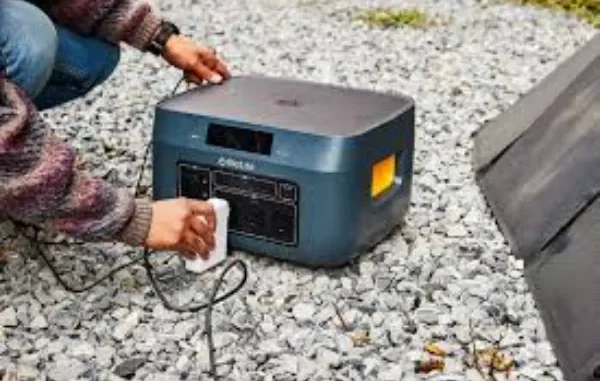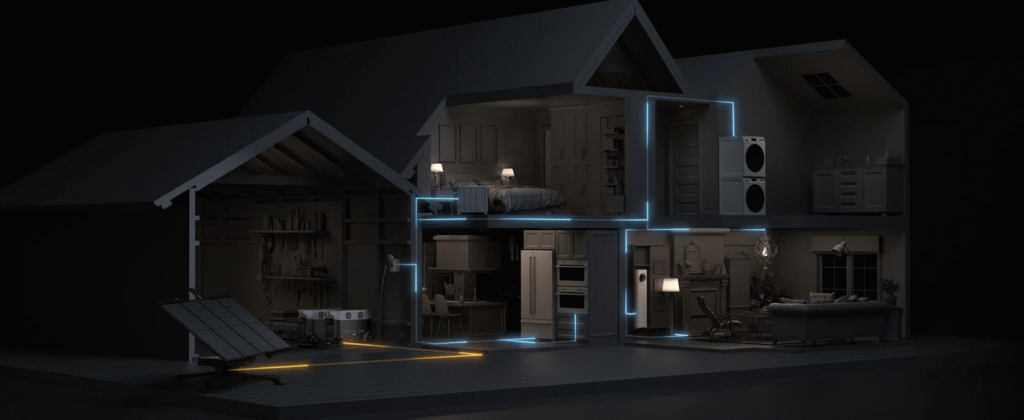
Sizing is where most buyers get stuck. You see numbers—watts, watt‑hours, surge, capacity—and it’s hard to connect them to the devices you actually want to run. A portable power station must satisfy two limits at the same time: enough power (W) to run your devices right now and enough energy (Wh) to run them long enough. Follow five steps to land on a size that fits your home, apartment, or travel plan.

Step 1: List Your Loads and Star the Must‑Runs
Write down the devices you care about during an outage or trip. Mark essentials:
- Refrigerator or mini‑fridge
- Modem + router
- Phone charging and a laptop/PC
- A few LED lights
- Optional: CPAP, window fan, microwave, well pump
You won’t run everything at once. Separate “always‑on” items (fridge cycling, network gear) from “burst” items (microwave for 5 minutes).
Step 2: Find Wattage and Estimate Duty Cycles
Check nameplates. If you only see amps, multiply by 120 V to get watts. Then estimate duty cycle—the percentage of time a device actually draws power:
- Fridge: averages 30–50% of its label draw depending on kitchen temperature.
- Wi‑Fi gear: near 100% at a modest draw.
- CPAP: 20–40 W without heated humidifier; far higher with it.
- Microwave: 100% while it runs—only a few minutes per hour.
Step 3: Confirm Continuous Output (Power)
Add the simultaneous watts for the devices you’ll run together. Leave headroom for startup surges on motor‑driven loads. If your target stack hovers around 300 W, don’t pick a 300 W inverter—give yourself breathing room so the unit runs cool and can handle spikes.
Step 4: Estimate Energy (Wh) for Your Target Runtime
Use a simple rule of thumb:
Rough runtime (hours) ≈ usable capacity (Wh) × 0.85 ÷ average load (W)
The 0.85 accounts for inverter and conversion losses. If you need eight hours at a 200 W average, you want about 200 × 8 ÷ 0.85 ≈ 1,880 Wh of usable capacity. Round up for winter, large rooms, or long outages.
Step 5: Plan Refueling From Day One
Capacity is only half the story. Decide how you’ll refill:
- Wall charging during brief grid windows
- Solar during daylight for multi‑day events
- Vehicle/alternator charging while you commute or run errands
- Small fuel generator outdoors to recharge the battery as a last resort
A realistic refuel plan lets you buy a smaller battery and still ride out long storms by topping up often.
Quick Reference: Typical Device Draws
- Modem + router: 15–25 W
- Laptop: 40–90 W while charging
- Phone: 5–15 W
- LED light: 5–10 W
- CPAP (no heat): 20–40 W; with heat: 60–100+ W
- Mini‑fridge: 50–100 W average with higher surge
- Window fan: 40–90 W
- Microwave: 1,000–1,300 W while on
- Coffee maker: 800–1,200 W while brewing
- Space heater: 700–1,500 W continuous (drains batteries quickly)
Two Example Sizes That Work for Many Homes
Desk‑Plus Kit (~500–700 Wh, 300–600 W inverter):
Runs modem, router, a laptop, and LED lights for a full work session—great for apartment blackouts or students.
Essentials Kit (~1,500–2,500 Wh, 1,500–2,400 W inverter):
Handles fridge cycling, network gear, lighting, and short microwave bursts. Add solar for multi‑day storms.
What About 240 V or Heavy Loads?
If you must run a deep well pump or large oven, check whether your configuration supports split‑phase (120/240 V) and make sure continuous and surge ratings cover the appliance. Many households skip heavy loads during outages and save energy for essentials—stretching runtime dramatically.
Battery Health, Temperature, and Storage
Cold weather reduces both output and charging speed. Keep the unit within its recommended temperature range and store it around half charge if you won’t use it for a while. Avoid running resistive heaters from the battery; use extra blankets, seal drafts, and warm a small room with minimal power instead.
Final Checklist Before You Buy
- Do your simultaneous W math.
- Do your Wh math for the hours you care about.
- Choose a unit with comfortable headroom.
- Decide how you’ll recharge on day two.
- Test the setup on a quiet afternoon before the first real storm.
Get those pieces right and your sizing will feel obvious. You’ll own a system that fits your life instead of one that almost works.
Leave a Reply